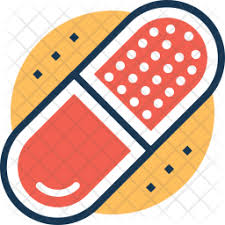Rajat 8910 asked
Which is the best tablet for urticaria? I have tried cetirizine 10mg as well as levocetrizine 10mg but sometimes even these drugs are not able to control it.
Answer
 Urticaria, or hives, is a skin rash that may be caused by foods, medications, insect bites or infections. The hives can also be from an unknown reason too. The first line of treatment is the use of a second generation antihistamine. In the U.S., the following drugs are considered second generation antihistamines:
Urticaria, or hives, is a skin rash that may be caused by foods, medications, insect bites or infections. The hives can also be from an unknown reason too. The first line of treatment is the use of a second generation antihistamine. In the U.S., the following drugs are considered second generation antihistamines:
- Allegra (Fexofenadine)
- Claritin (Loratadine)
- Zyrtec (Cetirizine)
- Xyzal (Levocetirizine)
- Clarinex (Desloratadine)
Second generation antihistamines are known to cause little to no drowsiness compared to first generation antihistamines, like Benadryl (Diphenhydramine), which typically cause a significant amount of drowsiness.
Is One Antihistamine Better Than Another For Hives?
There is not one particular second generation antihistamine that is recommended over another. A couple of considerations when choosing a second generation antihistamine is the dosage schedule and likelihood of drowsiness a drug may have. Most second generation antihistamines are once daily medications. The exception to this is Allegra (Fexofenadine). This is usually dosed every 12 hours (but can be 24 hours as well). As stated before, most second generation antihistamines cause little to no drowsiness. Zyrtec (Cetirizine), however, has been known to cause some drowsiness in some patients. Patients should be aware of this and take the necessary precautions when driving or operating machinery.
Some studies have reported that Zyrtec may be more effective than other second generation antihistamines for hives, but this is not seen in all individuals. If you get hives often, it is important to try several options and see what you best respond to and tolerate well.
Regardless of the particular drug, patients should stick with that particular drug for at least 2 weeks to see the full benefits. It is not recommended in the treatment of urticaria that patients just take the antihistamine as they feel they need it. It should be taken continuously for at least 2 weeks. If after 2 weeks relief is not seen, then it is time to visit the doctor for further treatment. It may be necessary to increase the dose of the antihistamine above recommended dosages (under the supervision of a doctor only) or change to a different type of drug class to help in the relief of the hives.
Lastly, if an antihistamine doesn't completely control your symptoms, you should speak to your doctor about the addition of other medications. Multiple studies have shown experiencing better relief of hives when an antihistamine is used in combination with the following:
H2 blockers include over the counter medications such as Zantac and Pepcid. Although commonly used for acid reflux, they can also help with hives for some. Leukotriene receptor antagonists (e.g. Singulair) are available by prescription and are most commonly used for allergies and asthma.
Conclusion
Second generation antihistamines are the drug of choice in the treatment of urticaria or hives. While there is not a preferred second generation antihistamine, patients should stick with one particular drug for at least 2 weeks when treating hives. If after 2 weeks no relief is seen, it will be necessary to go to the doctor and seek other treatment options.




